Directional energy potential (SEP)
The central concept of TRR–NOTIME is the Directional Energy Potential (SEP):
$$ \vec{\varphi} = \frac{\vec{E}_{\text{directional}}}{m}, \qquad [\vec{\varphi}] = \mathrm{[m^2]} $$
Here, \( \vec{E}_{\text{directional}} \) is projectable energy in a chosen direction and \( m \) is the mass of the configuration. SEP is purely spatial and directional; no time variable is required.



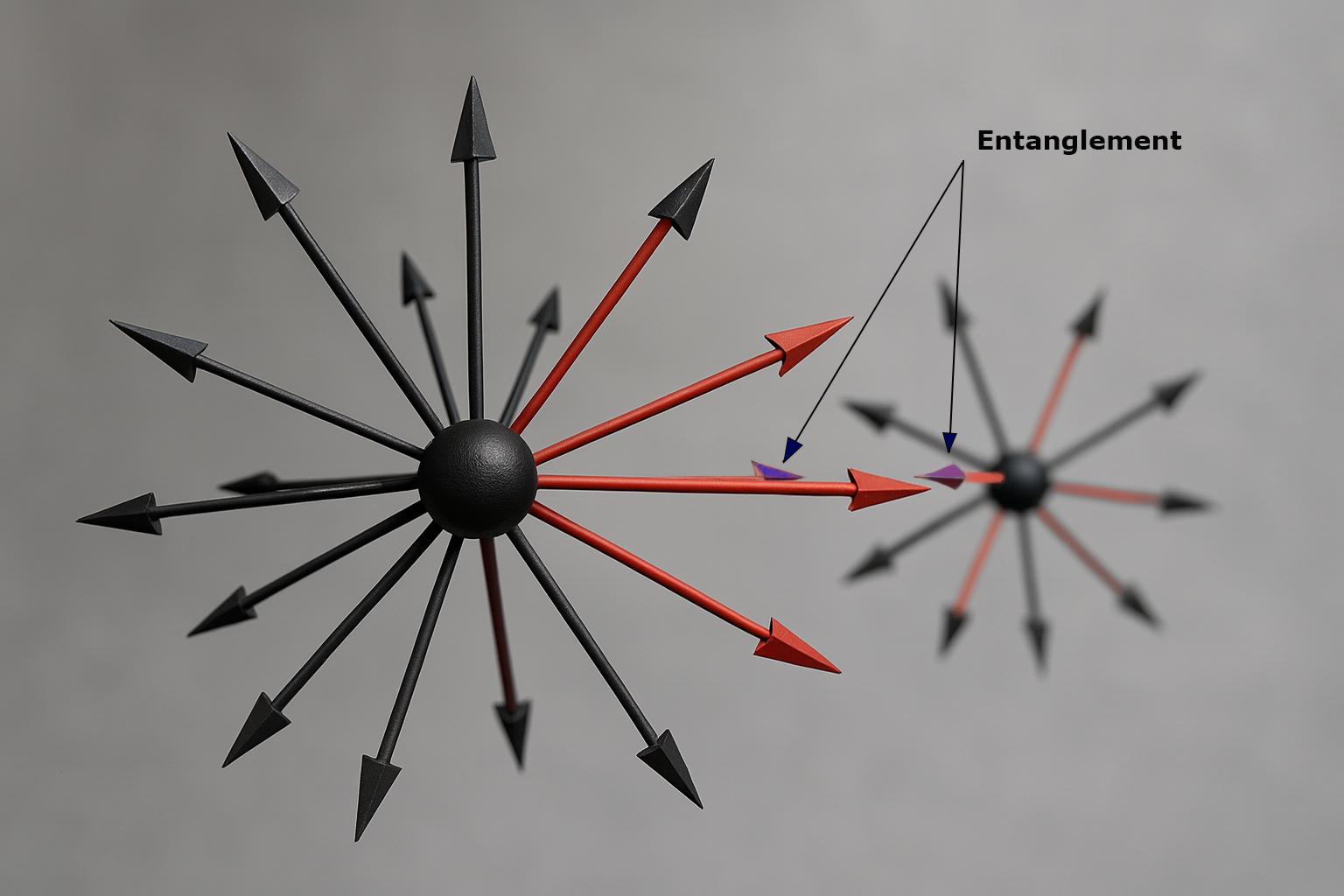
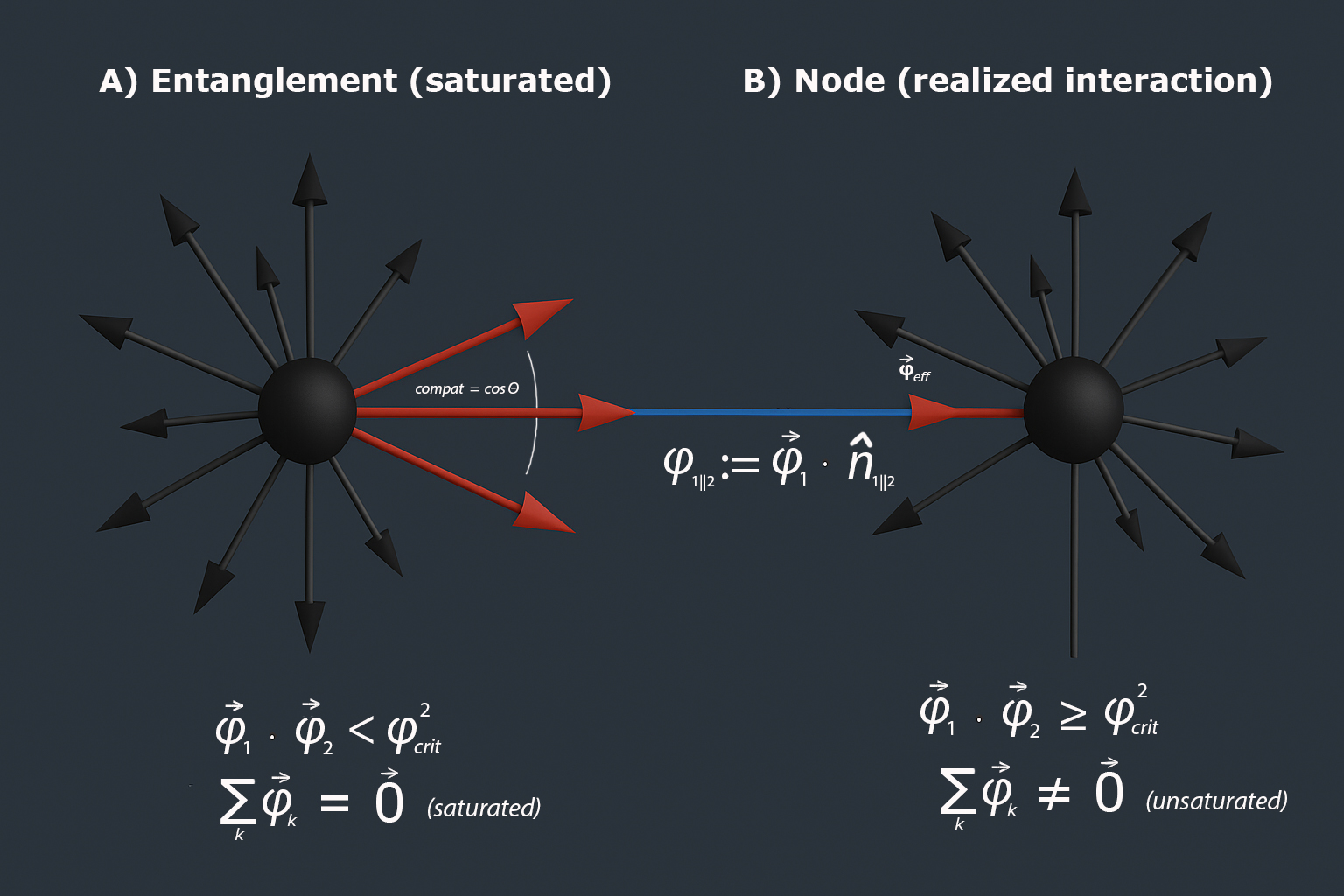
Right: same alignment but unsaturated \(\sum_k \vec{\varphi}_k\neq\vec{0}\),, and super-critical overlap, \(\vec{\varphi}_1\!\cdot\!\vec{\varphi}_2\ge\varphi_{\text{crit}}^{2}\), a realized interaction node with local \(\vec{\varphi}_{\mathrm{eff}}\) along \(\hat n_{12}\).
After normalizing to reference pairs \((r_0, g_0)\), the two independent datasets (solar system, electron–proton) overlap and lie on a straight line in log–log axes with slope ≈ −2, i.e. \( g_{\mathrm{norm}} = 1/r_{\mathrm{norm}}^{2} \).
- Solar: \( r_0 = 1\,\mathrm{AU} \), \( g_0 = g(1\,\mathrm{AU}) \).
- Micro: \( r_0 = a_0 \) (Bohr radius), \( g_0 = g(a_0) \).
Conclusion: both scale regimes obey the same \(1/r^2\) law; the difference is only the choice of \((r_0, g_0)\). This is consistent with the TRR statement \( g_{\mathrm{TRR}} = \lvert \vec{\varphi}_{\mathrm{eff}} \rvert / m \).
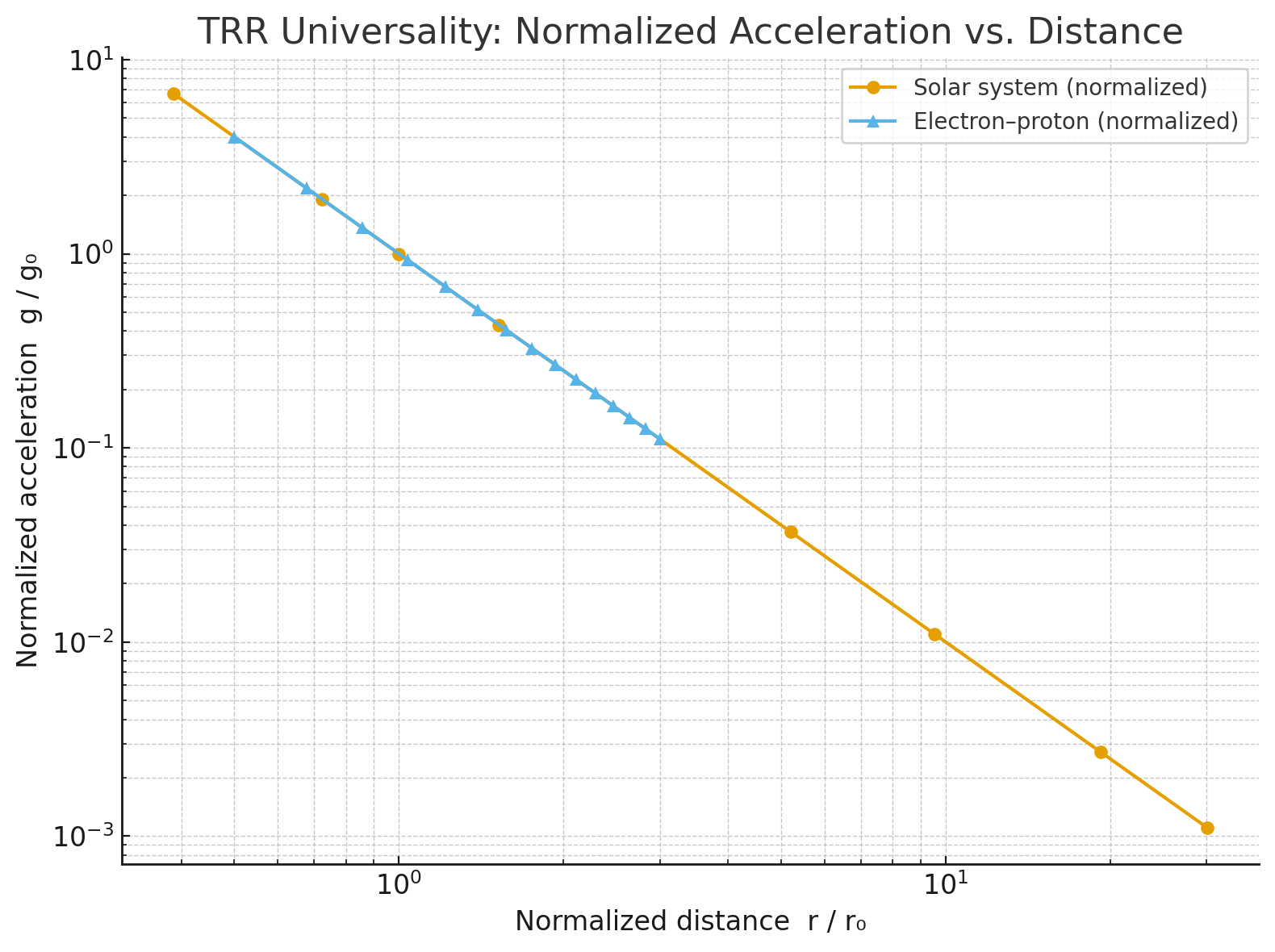
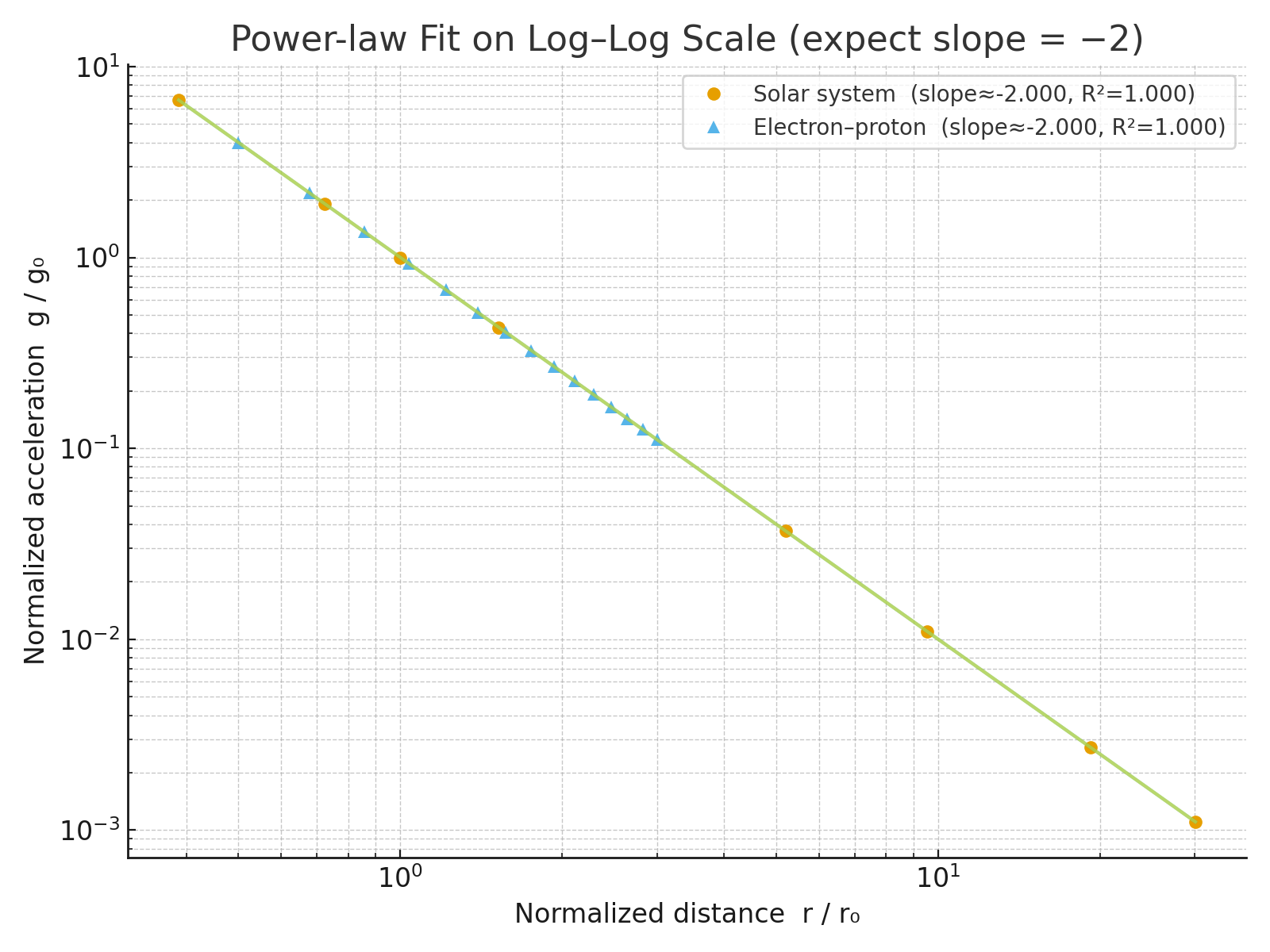
| r_norm = r / r₀ | g_norm = g / g₀ (= 1 / r_norm²) |
|---|---|
| 0.50 | 4.0000 |
| 0.75 | 1.7778 |
| 1.00 | 1.0000 |
| 1.50 | 0.4444 |
| 2.00 | 0.2500 |
| 3.00 | 0.1111 |
- Solar: Earth–Sun → \(r_{\mathrm{norm}}=1\Rightarrow g_{\mathrm{norm}}=1\). Mercury (0.387 AU) → \(r_{\mathrm{norm}}\approx0.387\Rightarrow g_{\mathrm{norm}}\approx 6.67\). Neptune (30.06 AU) → \(r_{\mathrm{norm}}\approx30.06\Rightarrow g_{\mathrm{norm}}\approx 0.0011\).
- Micro: \(r=a_0\) (Bohr) → \(r_{\mathrm{norm}}=1\Rightarrow g_{\mathrm{norm}}=1\). \(r=0.5\,a_0\) → \(g_{\mathrm{norm}}=4\). \(r=2\,a_0\) → \(g_{\mathrm{norm}}=0.25\).
Both gravity and entanglement are the same directional SEP structure; entanglement is aligned-but-saturated (no net projection), while gravity is the unsaturated net projection of the same alignment.
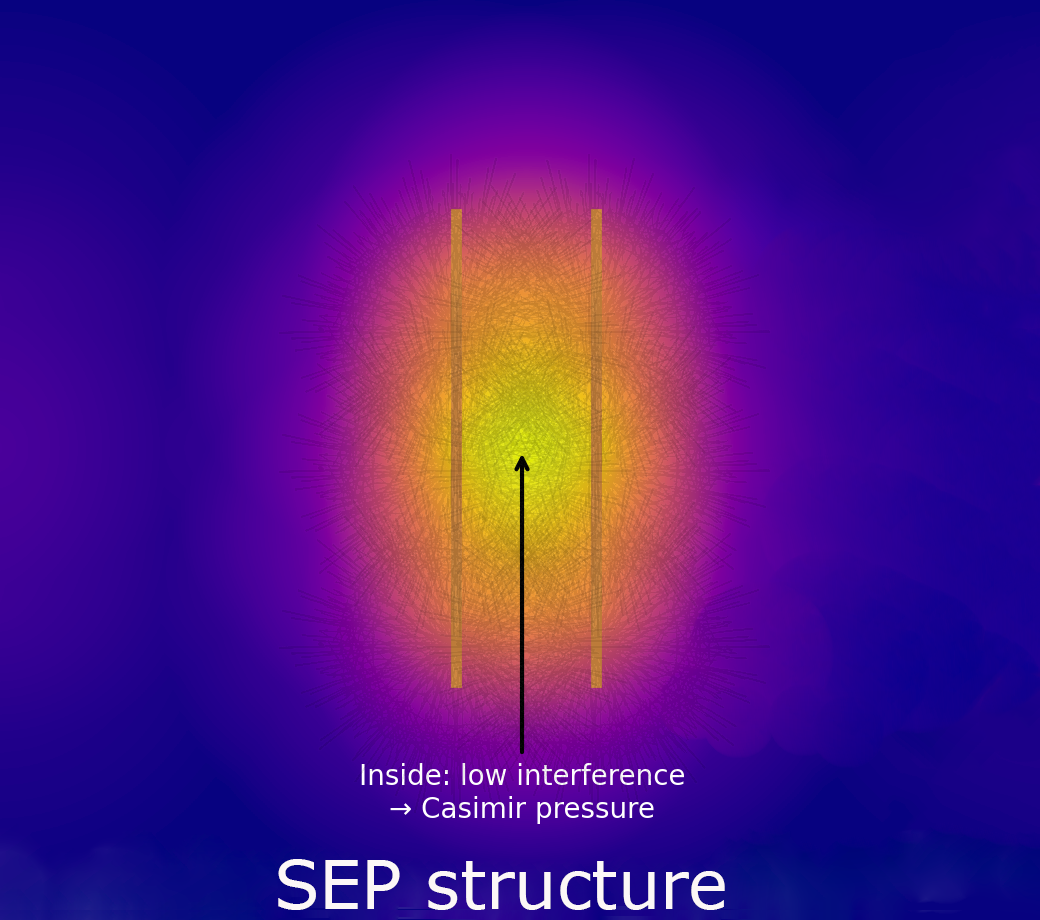
\(C_{\mathrm{proj}}\) is a combinatorial projection constant fixed by the chosen SEP-density unit; it reproduces QED-level magnitudes without time, forces, or vacuum fluctuations (see the DOI above).
Methodological note
All predictions on this page are computed purely in the SEP space. Where compared to observation (ISS, GPS, redshift), results are translated without time.